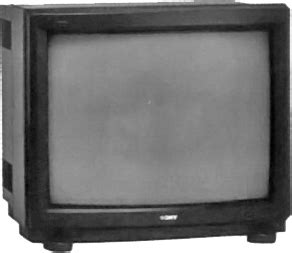In the annals of television history, the Sony PVM-4300 holds a unique position. Often referred to as the “biggest CRT ever made,” this behemoth of a TV was remarkable not just for its colossal 43-inch display, but also for its staggering weight of 450 pounds. Such heft meant that moving this television was a Herculean task, akin to shifting a medium-sized car engine or even a smaller grand piano. But beyond its physical dimensions, the PVM-4300 represented a pinnacle of CRT technology—a technology that, while now defunct, continues to evoke deep nostalgia and admiration among tech enthusiasts and retro gamers.
The price tag of $40,000 in 1989 further cemented the PVM-4300’s status as a luxury item. Adjusted for inflation, this would amount to more than $100,000 today, placing it in the realm of grand pianos and luxury vehicles. Such a high cost meant that very few were sold. As one commenter pointed out, Sony had only managed to sell three units by April 1990. This exclusivity has only added to the PVM-4300’s mystique, making it a coveted artifact among collectors and enthusiasts. But its high price and limited sales didn’t just reflect the cost of materials and manufacturing; it was also a testament to the engineering feats required to produce such a massive CRT screen.
The PVM-4300 didn’t just excel by being large; it also provided an exceptional viewing experience for its time. Early 1990s titles like Doom could not have found a better stage, as hinted by one commenter’s enthusiasm. However, there’s a temporal disconnection in that games like Doom couldn’t have exactly been played during the peak of the PVM-4300’s initial launch period. But that hasn’t stopped retro gamers today from seeking out surviving units to experience classic games on authentic hardware. The digital-to-analog conversion required for these setups also brings forth a unique visual fidelity that echoes the aesthetic essence of the time.
When discussing the practical implications of owning such a massive CRT, a notable concern repeatedly brought up is the significant weight. This made logistical aspects such as floor reinforcement and furniture durability crucial considerations—a stark contrast to today’s lightweight flat-panel displays. On forums and communities centered around retro technology, users detail their experiences of moving these monstrous units, often necessitating specialized equipment and multiple helpers. This adds another layer of historical richness, as owners aren’t just purchasing a piece of technology but taking on a mini-project filled with logistical challenges and triumphs.
From a technological perspective, the legacy of the PVM-4300 goes beyond just its massive size. It serves as a reminder of the physical and engineering limitations of CRT technology. The intricate electron gun designs, the massive glass required to maintain vacuum pressure, and the impressive magnetic arrangements needed for beam focus are all testimony to the ingenuity of the engineers of the time. Though often overshadowed by the rise of LCDs and OLEDs that boast superior clarity and efficiency, the depth and color richness of CRTs like the PVM-4300 remain unmatched in the eyes of many enthusiasts. In fact, the demand for high-quality, retro television displays is still vibrant, driven by a community that celebrates the unique properties of CRT technology.
In the end, the PVM-4300 was more than just a piece of television hardware; it was a marvel of its era, pushing the boundaries of what was possible in display technology. Today, as we revel in our slim and efficient OLEDs and LED screens, it is worth taking a moment to appreciate the giant shoulders on which modern display technology stands. Sony’s PVM-4300 remains a symbol of a bygone era, a time when televisions were not just tools for viewing content but impressive feats of engineering innovation in their own right.


Leave a Reply